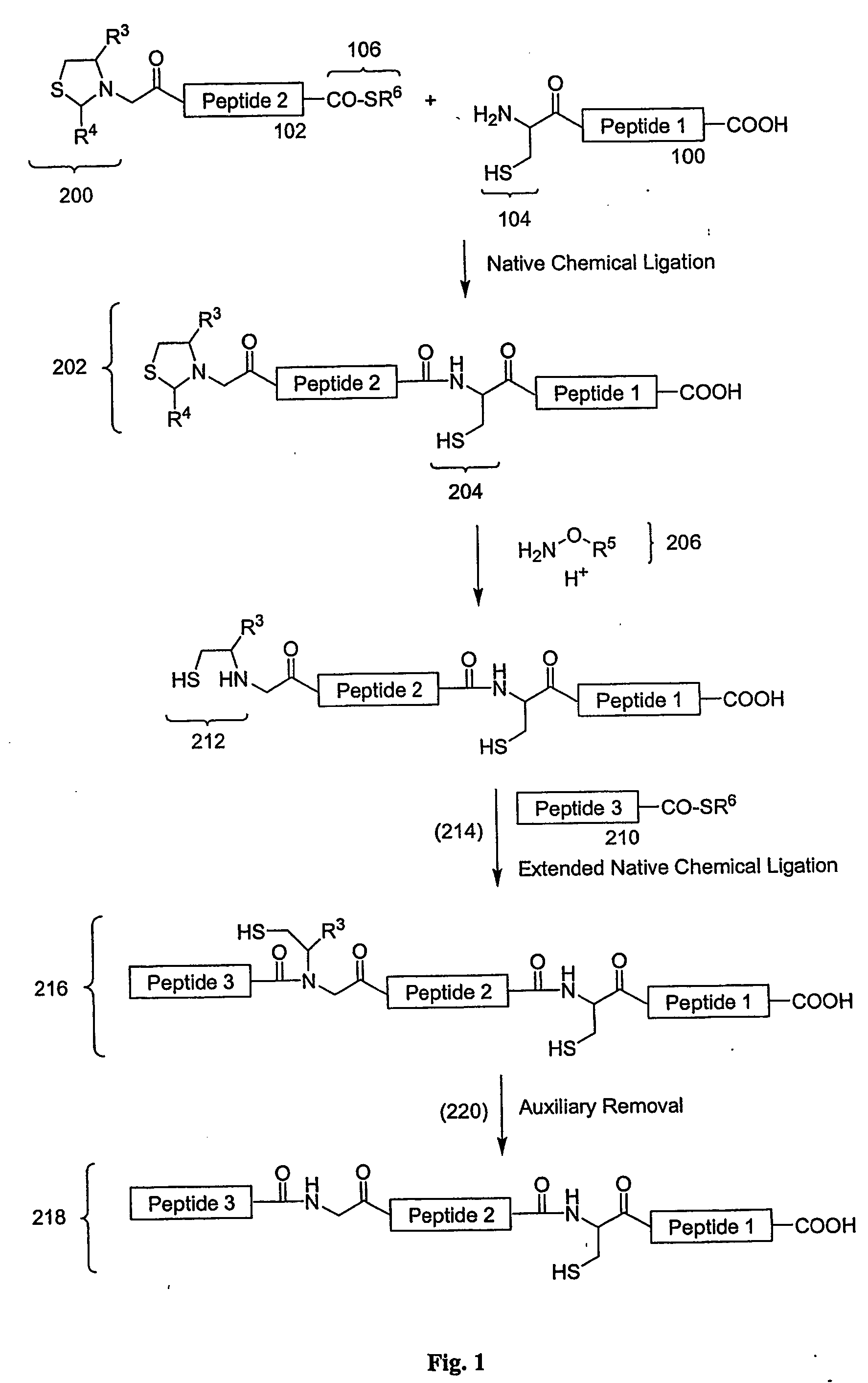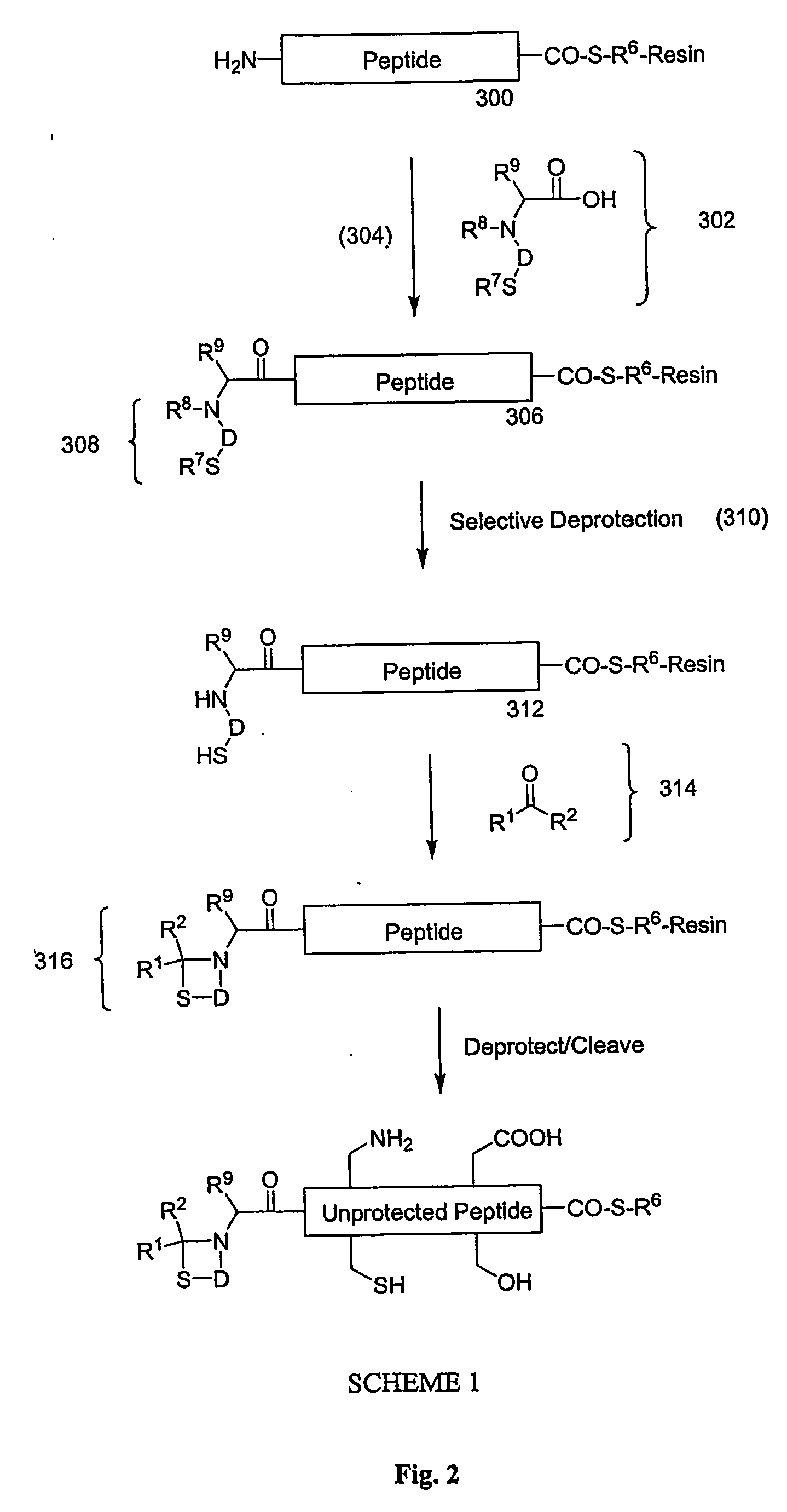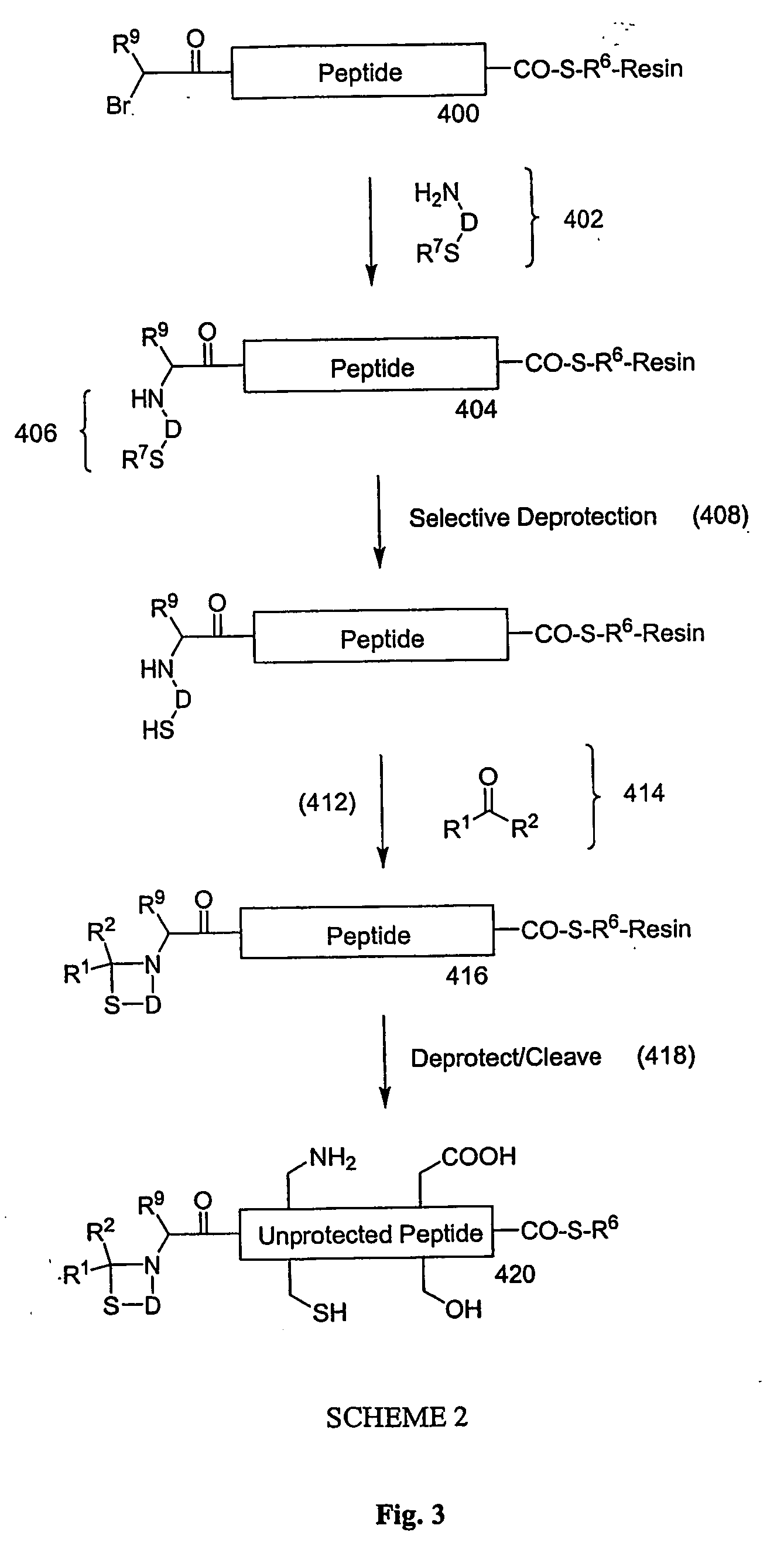Carboxy protection strategies for acidic c-terminal amino acids in chemical ligation of oligopeptides
a technology of carboxy protection and acidic c-terminal amino acids, which is applied in the direction of peptides, peptide/protein ingredients, peptide sources, etc., can solve the problems of difficult to distinguish genes and the sequences that control their expression, and the application of screening a large number of different gene products for determining function has been limited
- Summary
- Abstract
- Description
- Claims
- Application Information
AI Technical Summary
Benefits of technology
Problems solved by technology
Method used
Image
Examples
Embodiment Construction
I. DEFINITIONS
[0014] As used herein, the terms “peptide,”“peptide fragment,”“oligopeptide,” or “fragment” in reference to a peptide are used synonymously and refer to a compound made up of a single unbranched chain of amino acid residues linked by peptide bonds. Amino acid residues are sometimes represented herein by the symbol “Xaai” where “i”, when present, designates the position of the amino acid within a peptide. Each Xaai is independently selected from the group of natural and non-natural amino acids. Amino acids in a peptide or oligopeptide can be derivatized with lipid moieties, polyethylene glycol, dyes, biotin, haptens, oligonucleotides, or like moieties. The number of amino acid residues in such compounds varies widely. Peptides or oligopeptides referred to herein preferably have from 2 to 70 amino acid residue. More preferably, peptides or oligopeptides referred to herein have from 2 to 50 amino acid residues.
[0015] As used herein, the term “protein” is used synonymousl...
PUM
| Property | Measurement | Unit |
|---|---|---|
| pH | aaaaa | aaaaa |
| pH | aaaaa | aaaaa |
| pH | aaaaa | aaaaa |
Abstract
Description
Claims
Application Information
 Login to View More
Login to View More - R&D
- Intellectual Property
- Life Sciences
- Materials
- Tech Scout
- Unparalleled Data Quality
- Higher Quality Content
- 60% Fewer Hallucinations
Browse by: Latest US Patents, China's latest patents, Technical Efficacy Thesaurus, Application Domain, Technology Topic, Popular Technical Reports.
© 2025 PatSnap. All rights reserved.Legal|Privacy policy|Modern Slavery Act Transparency Statement|Sitemap|About US| Contact US: help@patsnap.com



